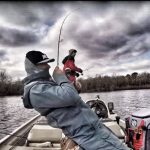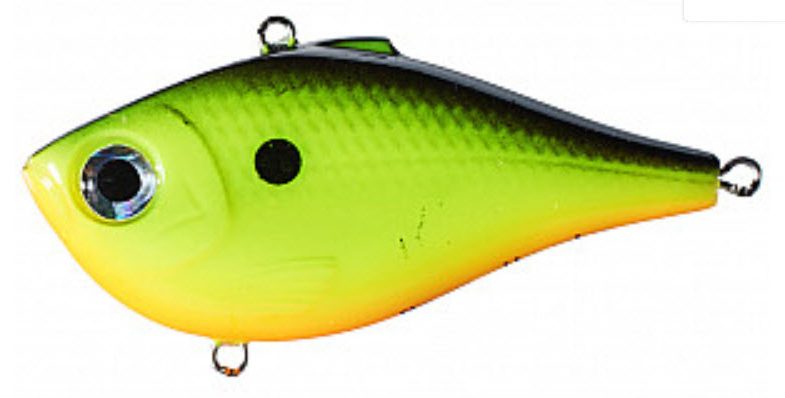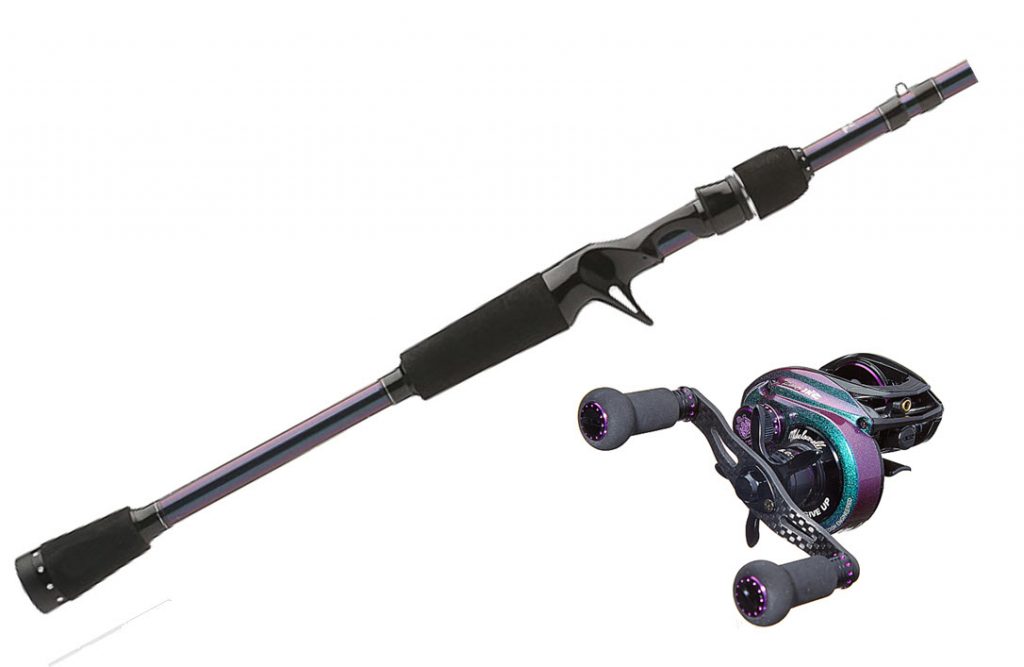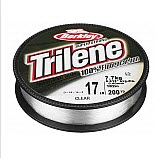
Last time we talked about jerkbaits, my favorite bait in the winter. This time I want to talk about my second favorite, the Rapala Rippin Rap Lipless Crankbait. But you should know this: Just because it’s my second favorite doesn’t mean I don’t use it all the time. In fact, when the water’s cold I never leave the dock without one tied on and ready to go.
I fish this little jewel two ways. The first is with a traditional yo-yo type retrieve. I just cast it out, let it fall to the bottom and then make it lift and fall all the way back to the boat. The trick here is to change the speed and amount of lift until you find what’ll trigger a bite the day or the hour you’re fishing. At times an erratic action will work best. At other times, though, a steady cadence is your best option.
My second retrieve is something I call feathering. All I do here is lift it up gently an inch or two off the bottom and sweep my rod sideways. Keep the rod tip below your head at all times and sweep from 12 o’clock to 3 o’clock.
Every so often I let it fall back down. That makes it look like a dying shad. It’ll stay right on the bottom but it’ll still be moving horizontally. Feathering is especially effective if the crayfish are still active or when the water’s down in the 30s.
You can control the rate of drop andthe buoyancy of the lure by changing the hooks or by swapping out your line. Big hooks make it sink faster and so does thin fluorocarbon. Small hooks and monofilament make it slow down.
These are really simple techniques but they are super effective in cold water. The shad are dying but still struggling to survive. The bass sense this and target them even when they’re not feeding all that much. It’s an easy meal, and they never pass that up.
Now that I’ve mentioned the fact that they might not be feeding all that much, it’s important to think about how a Rippin Rap is designed. There are two treble hooks on it. That means six points. If a bass slaps at it — common in the wintertime — there’s a good chance one of them will stick.
Another good thing about this lure is that it comes in three sizes and tons of colors. So, no matter the size of the forage or what it looks like you can match the hatch easy enough. Use the 5/16 ounce size if the forage is small and the 7/8 ounce size if it’s big. If it’s in between or if you’re not sure, go with the 1/2 ounce size.
Pick whatever color most closely matches your local forage. If you’re in doubt, it’s hard to beat Pearl Grey Shad when you yo-yo or Dark Brown Crawdad when you’re feathering.
I use an Abu Garcia IKE Delay Series Casting Rod, either 7 foot or 7 foot, 6 inches, with a medium action. Check out my last blog to see the reasons why I use that model. My reel is the same one I use for jerkbaits. It’s an Abu Garcia REVO IKE Casting Reel, 6.6:1 gear ratio. I don’t like high-speed reels with a Rippin Rap any more than I do with a jerkbait.
I spooled my reel with either Berkley Trilene 100% Fluorocarbon or with Berkley Trilene Sensation monofilament. Which one, and the test-weight, depends on what I want to do at the time.
Don’t think of lipless crankbaits as spring baits to be fished around grass. They’re just as good, or maybe better, in the winter. If you don’t believe me, give one a try before the leaves turn green next spring. You’ll change your mind.
___________________________________________
Like Ike on Facebook, and follow him on Instagram for fishing and fun content.
Subscribe to Mike’s YouTube channel, Going Ike, to ensure you see every adventure video.
Return to Mike Iaconelli’s website



















